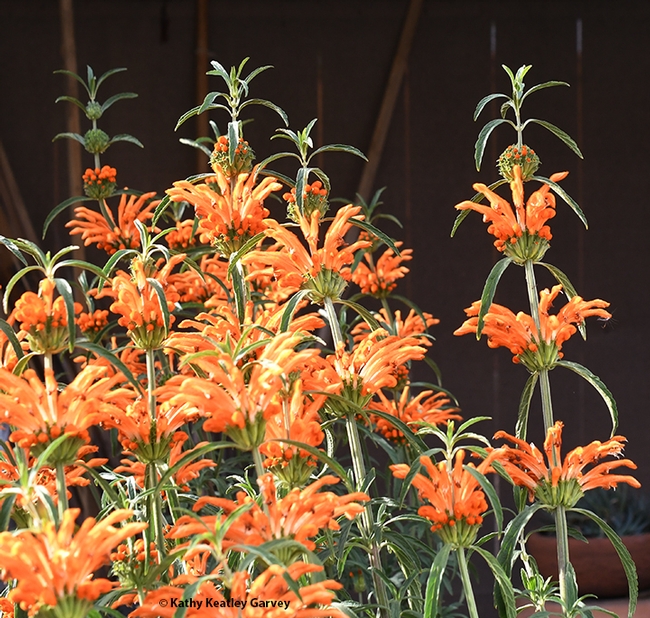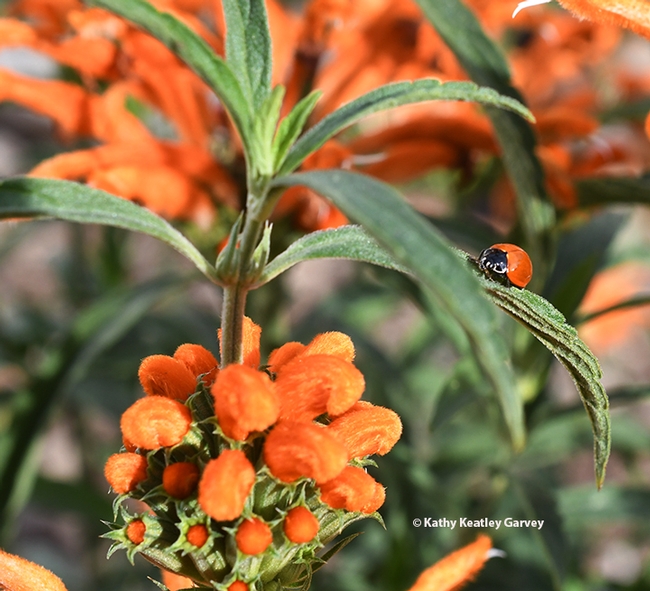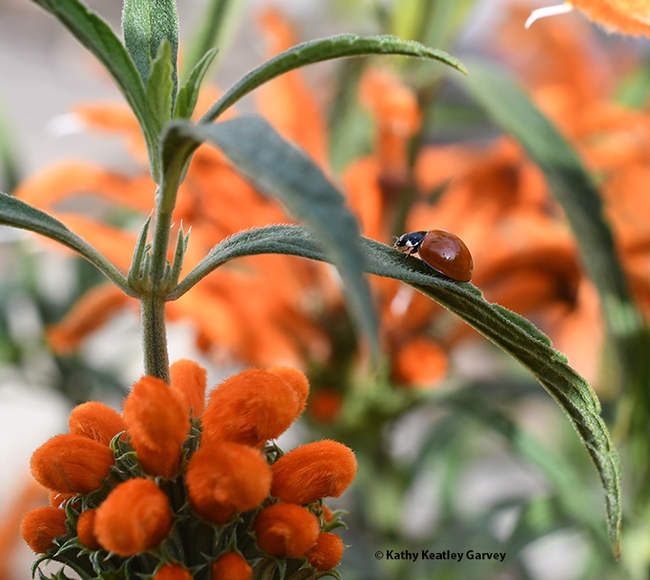The lady beetle, aka ladybug, scurried up the lion's tail plant, Leonotis leonurus.
Up one stem and down another, she went. Apparently, she didn't find what she was looking for--aphids or other small bodied-insects--and took flight.
If you haven't planted this in your pollinator garden, you should. A native of South Africa, it is cherished for its dazzling orange spiked blossoms, reminiscent of a lion's tail. The plant is a member of the mint family, Lamiaceae, which means it has square stems.
Other attributes include: drought resistant, deer resistant, and basically disease-free and pest-free. It attract birds, butterflies and hummingbirds. And our little buddies, the lady beetles. You can never get enough of them!
Note also that the lion's tail is known for its medicinal properties. "The main psychoactive component of Leonotis leonurus is claimed to be leonurine, even though leonurine has never been found in the plant using chemical analysis," according to Wikipedia. "Like other plants in the mint family, it also contains marrubiin. The name 'wild dagga' links it closely to cannabis as 'dagga' derived from the Khoikhoi 'dachab' is an indigenous South African name for cannabis species. This name may be a misnomer, as no part of the plant is used as a hallucinogen."
Wikipedia adds: "The infusions made from flowers and seeds, leaves or stems are widely used to treat tuberculosis, jaundice, muscle cramps, high blood pressure, diabetes, viral hepatitis, dysentery, and diarrhea. The leaves, roots and bark are used as an emetic for snakebites, bee and scorpion stings. The fresh stem juice is used as an infusion drunk for 'blood impurity' in some places of South Africa."
Who knew?
We just like the calming effect it has in the pollinator garden.
Attached Images:

The lion's tail, Leonotis leonurus, is a native of South Africa and attracts birds, butterflies and hummingbirds. (Photo by Kathy Keatley Garvey)

A lady beetle, aka ladybug, looks for aphids and other small bodied insects on the lion's tail. (Photo by Kathy Keatley Garvey)

The lady beetle, aka ladybug, blends in with her environment, the spiked orange blossoms of a lion's tail. (Photo by Kathy Keatley Garvey)